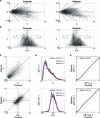Tinnitus does not require macroscopic tonotopic map reorganization
- PMID: 22347171
- PMCID: PMC3269775
- DOI: 10.3389/fnsys.2012.00002
Tinnitus does not require macroscopic tonotopic map reorganization
Abstract
The pathophysiology underlying tinnitus, a hearing disorder characterized by the chronic perception of phantom sound, has been related to aberrant plastic reorganization of the central auditory system. More specifically, tinnitus is thought to involve changes in the tonotopic representation of sound. In the present study we used high-resolution functional magnetic resonance imaging to determine tonotopic maps in the auditory cortex of 20 patients with tinnitus but otherwise near-normal hearing, and compared these to equivalent outcomes from 20 healthy controls with matched hearing thresholds. Using a dedicated experimental paradigm and data-driven analysis techniques, multiple tonotopic gradients could be robustly distinguished in both hemispheres, arranged in a pattern consistent with previous findings. Yet, maps were not found to significantly differ between the two groups in any way. In particular, we found no evidence for an overrepresentation of high sound frequencies, matching the tinnitus pitch. A significant difference in evoked response magnitude was found near the low-frequency tonotopic endpoint on the lateral extreme of left Heschl's gyrus. Our results suggest that macroscopic tonotopic reorganization in the auditory cortex is not required for the emergence of tinnitus, and is not typical for tinnitus that accompanies normal hearing to mild hearing loss.
Keywords: auditory cortex; functional magnetic resonance imaging; humans; tinnitus; tonotopy.
Figures






References
-
- Baguley D. M. (2002). Mechanisms of tinnitus. Br. Med. Bull. 63 195–212. - PubMed
-
- Barnea G., Attias J., Gold S., Shahar A. (1990). Tinnitus with normal hearing sensitivity: extended high-frequency audiometry and auditory-nerve brain-stem-evoked responses. Audiology 29 36–45. - PubMed
-
- Baumgart F., Kaulisch T., Tempelmann C., Gaschler-Markefski B., Tegeler C., Schindler F., Stiller D., Scheich H. (1998). Electrodynamic headphones and woofers for application in magnetic resonance imaging scanners. Med. Phys. 25 2068–2070. - PubMed
LinkOut - more resources
Full Text Sources

